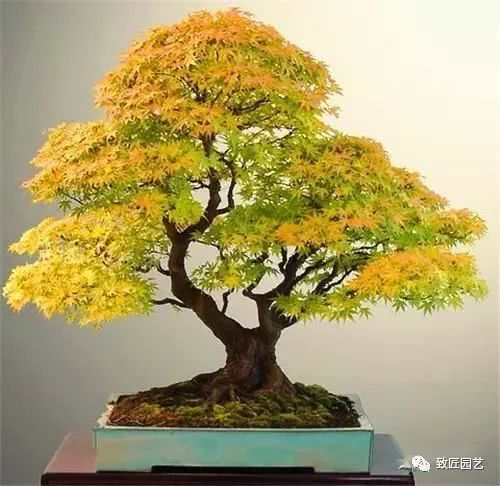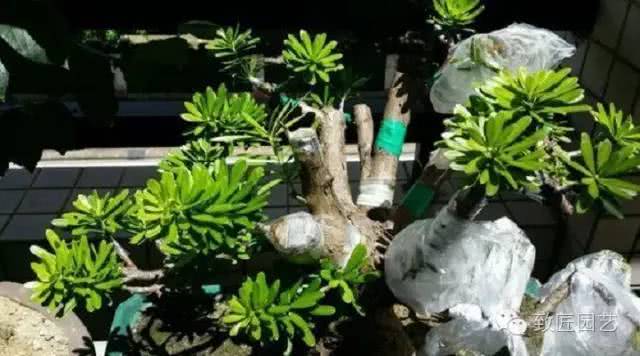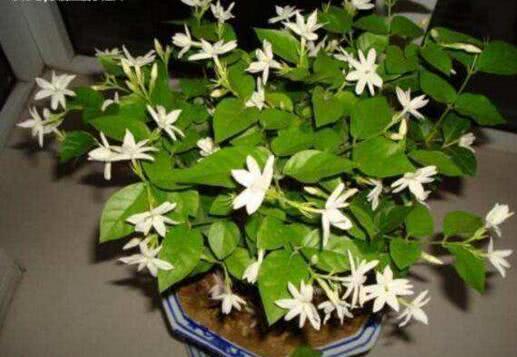Is the bonsai taking too long to form? Let's speed it up a little bit.

It takes a long time to create a mature bonsai, during which plants are made by natural growth and artificial transformation, and do not be eager for quick success and quick profit, so the method is very important in the creative process.
After decades of practice, we have also gone through many detours, and finally found out the method of synchronous cultivation, that is, in the process of creation, we should try our best to make bonsai roots, tops, supports, branches and other parts grow harmoniously and synchronously, so that one part of the bonsai will not grow too fast or too thick, while the other part grows too slowly, too thin, and even the exuberant part grows more and more prosperous, and the weaker part grows weaker or wither and die. This method greatly shortens the forming time of bonsai.
One stump cultivation period
Cut the stump in one step as far as possible, if the root is too long and it is not good to put it on the pot in the future, cutting and sawing will increase the risk of death. In order to better highlight the characteristics of the stump, it should also be cut according to the head of the stump, the shape of the trunk and creative ideas. Root treatment should be carried out at the same time of cutting, because after a few years of cultivation in the field, there may be more coarse roots and less fine roots. in order to facilitate potting and cultivating fine roots in the future, coarse roots should be cut off properly, and rooting elements should be applied to the fracture to promote fine roots.
After cutting, the stump does not need major changes in the field for 1-2 years, but to determine the position of the top branches and support branches, the excess branches are gradually removed, so that the top branches and support branches grow strong. 3-5 years later, when the first section of the receptacle branch is thick enough, it begins to cut off the branch, causing it to sprout new buds and grow cross-horn branches. In this period of stump cultivation, it is necessary to master the controlled growth of branch receptacle, top branch and root, and cultivate them synchronously. If the top branch grows fast, its growth should be strictly controlled. if it is allowed to grow, it will be too thick, too long, and lose proportion. Some bonsai tops grow up section by section, and it is difficult to clean up at last, which is why. The horizontal branches under the top branches should also be controlled and should not be too thick or too long.
Second receptacle, branch and top cultivation period
The cultivation of support, branch and top is a very important stage, which requires both cultivation and creation, so we must master it well so as not to take detours and waste time.
If it is a regular tree or dwarf tree, it is necessary to first set the horizontal horn branches to grow to a sufficient proportion; other branches should be properly controlled according to their size; and the branches under the top branches should be strictly controlled, not too thick, and their growth should be controlled according to levels and proportions.
If you want to make big floating branches and falling branches, in order to make the floating branches and falling branches grow fast, it is necessary to control the growth of the support of the branches, especially the top branches and top branches, even if the proportion is not enough, and the horizontal branches on the floating branches and falling branches should not be cut off. If it is found that the growth of the tail branch is not exuberant when the floating branch or falling branch grows to a certain thickness, the horizontal branch on the floating branch and falling branch should be properly controlled, especially the horizontal branch reserved for support; if the thickness is enough, half or 2/3 of the length should be cut off to make the tail branch grow vigorously. In this way, floating branches and falling branches can take shape quickly.
When the proportion of floating branches and falling branches is enough, they begin to cultivate the horizontal horn branches on the support position of the floating and falling branches, and at the same time cultivate the horizontal horn branches on other supports, so as to make all the horizontal horn branches grow synchronously as far as possible. At this time, it is necessary to strictly control the growth of the top branches, cut off the bad coarse branches, leave the good twigs, and cultivate them slowly, so that the distribution of the top branches is reasonable, hierarchical, dense and orderly. If the top is not well controlled, prematurely mature or the branches are too thick or too long, it will seriously affect the effect of bonsai creation; we should also check the roots, cut off the roots that are too long and too thick, and let them further grow fine roots to ensure the safety of the basin.
Three upper pots to cultivate trapped roots and twigs
When bonsai is cultivated in the field to 60% to 70% mature, it must be cultivated in the pot for one to two years, so that the roots can develop in the basin and produce more fine roots to adapt to growing in the basin for a long time in the future.
In order to cultivate trapped roots in the upper basin, the basin used should be slightly larger than the suitable pot after maturity, because bonsai trees have been cultivated underground for many years, and there is a certain risk of growing in the pot. using a larger basin can retain more roots and have enough soil, which can reduce the risk.
During the period of pot cultivation, it is necessary to accurately grasp the trend and overall layout of each bracket and top branches, control the top branches too fast, too thick, too long, and keep four to medium branches at the top. Each bracket and each node horizontal horn branch, twig according to the order from thick to fine to control its growth, the release of the release, the control of the control, according to the creative train of thought.
After a year or two of root cultivation in the basin, if the bonsai grows vigorously, there is no need to go down to the ground to cultivate it. When the bonsai is 80 or 90% mature, it can be changed from the original larger pot to a basin of the right size. If it does not grow well, it needs to be re-cultivated in the ground, and then it will be put on the basin after it has grown vigorously. The culture method of the branch support and the top branch is the same as before.
Four caps and cultivation of moving branches
When the receptacle of each branch of bonsai is basically mature and the twigs on the horizontal horn branch grow a number of young branches, we can focus on the creation of the top. The size of the top depends on the size and layout of the bonsai. The top branch leaves three to five bifurcations to make the top, and the following leaves a few branches moving in three to four directions, keeping them in turn according to their thickness, so that they do not overlap as far as possible, and there is a sense of layers, and the branches should be changed, not from a straight branch to the tail, with curved knots and cross-angled branches, so that the top can be beautiful.
While carrying on the top cultivation and creation, cultivate the young branches on the horizontal corner branches of each bracket, which is what people usually call toothpick branches. The growth of young shoots should be controlled in the stage of cultivating young branches, and they should not be too thick or too long. Cut the long and fast ones in time, let the weak branches keep up or strip and change brocade, sprout one or two more times, so that the young branches on the supports of the whole bonsai can grow evenly-- only in this way to cultivate and create, can all parts grow synchronously and harmoniously at each stage, can we shorten the forming time of bonsai, take fewer or no detours, and create a graceful Lingnan bonsai.
Wonderful content
- Prev

A brief introduction to the grafting technique of bonsai plants
What is grafting? Grafting is to attach some organs of one plant, such as buds or branches, to the stem or root of another plant, so that the two parts can heal each other and grow into a complete plant. The buds or branches grafted are called scions.
- Next

Gardenia, jasmine and longevity flowers drink while the water is hot and the living roots and leaves run together.
Now is the hottest time of the year, this time is not just want to stay at home, then just, quickly plant potted flowers, what is not that kind of flower arrangement, and insert a pot of gardenia, jasmine or longevity flowers, let it bloom.
Related
- Wuhan Hospital Iron Tree Blooming Result Was Instantly Frightened by the Gardener Master
- Which variety of camellia is the most fragrant and best? Which one do you like best?
- What is the small blue coat, the breeding methods and matters needing attention of the succulent plant
- Dormancy time and maintenance management of succulent plants during dormancy
- Minas succulent how to raise, Minas succulent plant pictures
- What are the varieties of winter succulent plants
- How to raise succulent plants in twelve rolls? let's take a look at some experience of breeding twelve rolls.
- Attention should be paid to water control for succulent plants during dormant period (winter and summer)
- Watering experience of twelve rolls of succulent plants
- Techniques for fertilizing succulent plants. An article will let you know how to fertilize succulent plants.

